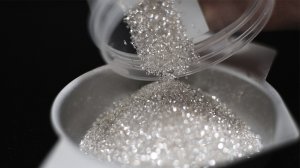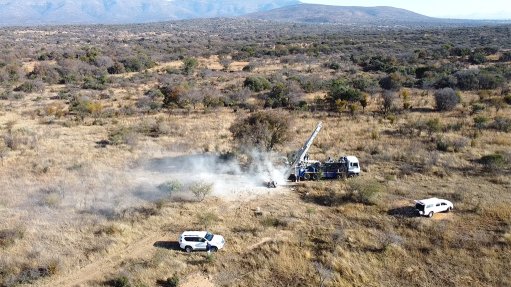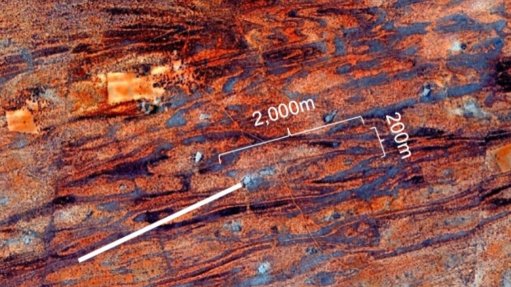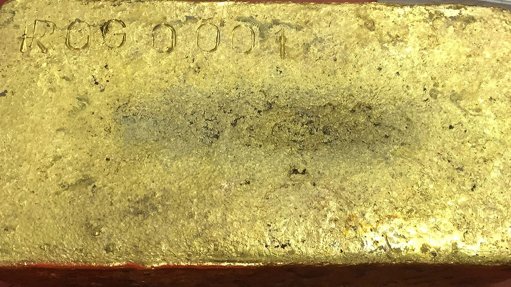Major doubles down on natural diamonds after synthetics closure

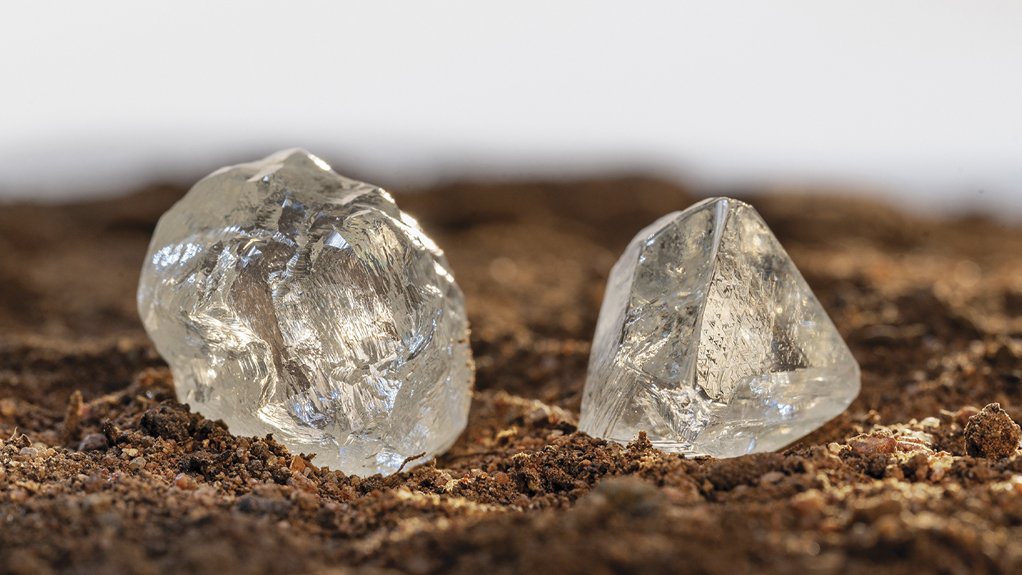

NATURAL ALLURE With the closure of its laboratory-grown diamond jewellery business – Lightbox – De Beers Group’s focus in the jewellery sector will return solely to mining, selling and marketing natural diamonds
SUSTAINABILITY CONTRIBUTION Natural diamonds are recovered responsibly by De Beers from countries where diamond revenues deliver substantial sustainability benefits
Following the early-May announcement of its intention to close its laboratory-grown diamond (LGD) jewellery business – Lightbox – diamond major De Beers Group’s focus in the jewellery sector will return solely to mining, selling and marketing natural diamonds, London-based De Beers corporate communications VP David Johnson tells Mining Weekly.
The focus on natural diamonds, he says, offers substantial opportunities over the longer term, given the declining global supply outlook and significant demand growth potential as middle classes expand in key locations.
“We remain focused on driving demand for natural diamonds and will be reallocating resources previously focused on Lightbox towards the parts of the De Beers Group business that will support growth in the natural diamond market.”
De Beers notes that Lightbox, established in 2018, has highlighted that LGDs are a distinct product from natural diamonds, with different attributes and different value.
In its mid-2024 Origins Strategy launch, De Beers sought to reset its focus on downstream diamonds marketing and evolve this approach for a new generation of consumers. This involved growing demand for natural diamonds through the reinvigoration of category marketing and embracing new approaches that increase reach and impact.
De Beers’ focus on the upstream will continue to involve prioritising investment in the highest potential assets while ensuring a focus on efficient and streamlined operations.
Following this, Johnson says De Beers has made “great progress” through collaborations with leading retailers in key diamond consuming countries – Signet in the US, Tanishq in India and Chow Tai Fook in China.
By way of example, he says that alongside the establishment of a new natural diamond focused marketing campaign targeting younger bridal couples, De Beers’ collaboration with Signet also sees the brand’s 20 000 retail staff trained in how best to communicate the compelling attributes of natural diamonds to consumers.
In India, alongside De Beers’ Tanishq collaboration, the company has also worked with key Indian jewellery trade body – the GJEPC – to establish the Indian Natural Diamond Retailer Alliance to support independent jewellers in the country with access to customisable promotional materials and natural diamond training resources.
“We are already working hard with a range of other businesses, governments and trade bodies to facilitate a unified approach across the sector to promoting natural diamonds.
“By collaborating in this way, we amplify the impact of our marketing spend, as we bring in investment from others, ensuring our messages are shared through more consumer touchpoints.”
Natural vs Synthetic
While synthetic diamonds have at times been marketed on the basis of offering greater assurance of provenance than natural diamonds, Johnson says the reality is that most of the time, consumers remain unaware of where or how the diamond was synthesised, adding that most synthetic diamonds are produced using fossil fuel energy and deliver only limited social benefit through the manufacturing process.
“The natural diamonds we supply are recovered responsibly from countries where diamond revenues deliver huge sustainability benefits, and it is vital that we tell that story effectively because it is a clear point of differentiation.”
In terms of emotional meaning, Johnson says there is “simply no symbol better suited to celebrating the most meaningful moments in a person’s life than a natural diamond”.
“People want to celebrate the moments and emotions that are rare, unique, natural and precious; with their rarity, uniqueness, connection to nature and enduring value, natural diamonds are ideally suited as symbols.”
However, LGDs do not share these attributes and cannot provide the same kind of emotional symbolism, he counters.
As for building consumer confidence in natural diamonds, Johnson says De Beers’ Tracr blockchain platform is playing a key role through enabling immutable data to be recorded about a natural diamond’s origin and provenance, helping to provide more assurance at the retail level, as well as enabling a richer storytelling opportunity.
“As part of our new agreements with the government of Botswana, we have also agreed to work with our partners in government on collaborative approaches to marketing diamonds from Botswana, which will further highlight the positive provenance of our natural diamond supply.”
Further, De Beers is also progressing its DiamondProof verification instrument. This device, which can confirm the natural origin of a diamond in seconds, is the first designed for use on the retail counter, enabling retailers to demonstrate the differentiation of LGDs from natural diamonds at the point-of-sale.
“With our research showing that most consumer decisions to convert from a natural diamond purchase to an LGD are made in store, the launch of DiamondProof is very significant.”
Industrial LGD Demand
While Lightbox is being closed, Element Six – De Beers Group’s subsidiary that previously produced LGDs for Lightbox – will maintain its exclusive focus on industrial solutions using synthetic diamonds.
Building on more than seven decades of expertise in producing LGDs, Johnson says Element Six is well-positioned to seize the rapidly growing potential for synthetic diamond applications across a range of future-facing technologies and applications.
In the quantum sensing space, Element Six has established a company with machinery and components maker Bosch; the latter estimating that in the long run, the global market potential for quantum sensors in medicine and mobility will be in the mid-single-digit billion range.
Article Enquiry
Email Article
Save Article
Feedback
To advertise email advertising@creamermedia.co.za or click here
Announcements
What's On
Subscribe to improve your user experience...
Option 1 (equivalent of R125 a month):
Receive a weekly copy of Creamer Media's Engineering News & Mining Weekly magazine
(print copy for those in South Africa and e-magazine for those outside of South Africa)
Receive daily email newsletters
Access to full search results
Access archive of magazine back copies
Access to Projects in Progress
Access to ONE Research Report of your choice in PDF format
Option 2 (equivalent of R375 a month):
All benefits from Option 1
PLUS
Access to Creamer Media's Research Channel Africa for ALL Research Reports, in PDF format, on various industrial and mining sectors
including Electricity; Water; Energy Transition; Hydrogen; Roads, Rail and Ports; Coal; Gold; Platinum; Battery Metals; etc.
Already a subscriber?
Forgotten your password?
Receive weekly copy of Creamer Media's Engineering News & Mining Weekly magazine (print copy for those in South Africa and e-magazine for those outside of South Africa)
➕
Recieve daily email newsletters
➕
Access to full search results
➕
Access archive of magazine back copies
➕
Access to Projects in Progress
➕
Access to ONE Research Report of your choice in PDF format
RESEARCH CHANNEL AFRICA
R4500 (equivalent of R375 a month)
SUBSCRIBEAll benefits from Option 1
➕
Access to Creamer Media's Research Channel Africa for ALL Research Reports on various industrial and mining sectors, in PDF format, including on:
Electricity
➕
Water
➕
Energy Transition
➕
Hydrogen
➕
Roads, Rail and Ports
➕
Coal
➕
Gold
➕
Platinum
➕
Battery Metals
➕
etc.
Receive all benefits from Option 1 or Option 2 delivered to numerous people at your company
➕
Multiple User names and Passwords for simultaneous log-ins
➕
Intranet integration access to all in your organisation



